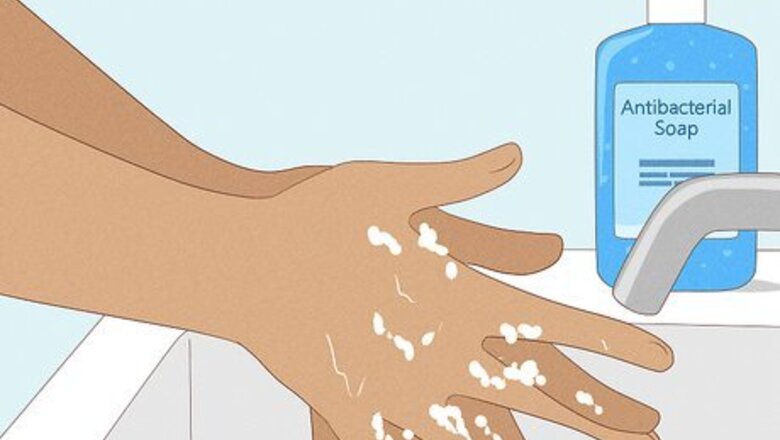
views
- Clean your navel piercing twice a day with warm soap and water to avoid infections and irritation.
- Leave your piercing in your belly button until it’s fully healed, which typically takes between 6 months and a year.
- Avoid swimming pools for at least 6 months after getting your belly button pierced to ensure it stays healthy.
Belly Button Piercing Aftercare

Handle your piercing with clean hands. Wash your hands thoroughly with antibacterial soap and water before you touch your piercing with your fingers. Dirt and oils from your fingers can transfer to your piercing (which is an open wound) and potentially cause an infection. Use a nail scrubber brush to remove any dirt from underneath your nails, as excess dirt could also transfer to and infect your piercing as you touch it.

Wash your piercing twice daily with warm water and soap. Use a Q-Tip dipped in warm water to wipe and remove any built up crust from around the piercing site. Then, gently wash your piercing with antibacterial soap in the shower. Add a small amount of soap to your fingertips, and massage the soap onto your piercing for about 20 seconds. Thoroughly rinse off the soap residue, exit the shower, and dry your piercing using a dry paper towel rather than a bath towel. Use a gentle hand and avoid moving the jewelry around too much while you wash the piercing to avoid irritation. Piercers and doctors also recommend cleaning new piercings with a prescribed saline solution to help disinfect the area. Avoid overcleaning your piercing by sticking to a twice-daily regimen, as overcleaning could cause an infection and slow the healing process. Avoid taking baths when you have a new navel piercing to keep dirt and bacteria out of the piercing. Paper towels are the best thing to use when drying a fresh piercing because they can be thrown away and won’t harbor moisture and bacteria.
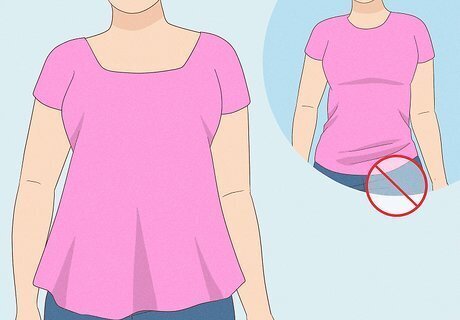
Wear loose clothing. Tight, constricting clothing can irritate and snag onto a new piercing because of the friction. Try to wear loose-fitting, breathable fabrics like cotton, and stay away from synthetic materials. Also, be cautious when changing or undressing. Removing your clothes roughly or quickly increases your chances of snagging your piercing on your clothes and causing injury.

Avoid touching your piercing. It’s appropriate to touch your piercing with clean hands while you wash it but avoid unnecessarily playing with, twisting, pulling, or fondling it. Any excessive touching (especially with unwashed hands) can make your piercing more susceptible to opening up, bleeding, or becoming infected.

Leave the jewelry in place while it heals. Your initial piercing jewelry should stay in place for the duration of the healing period, which can be between 6 and 12 months. Removing your jewelry before your piercing is fully healed can cause the piercing site to close up, which in turn can make reinserting jewelry more difficult and painful. This added irritation could create more scarring and slow your body’s healing process.

Sleep on your back or side for the first few weeks after your piercing. If you’re usually a stomach sleeper, do your best to avoid laying on your stomach in your sleep. Sleeping on your stomach could irritate and harm your piercing site, causing unnecessary pressure that could hinder the healing process.
Preventing Infection, Rejection & Migration

Avoid applying ointments to your piercing site. Ointments or creams prevent your piercing from coming in contact with air. They seal in moisture at the piercing site, letting potential bacteria grow and fester. Even if an ointment is antibacterial, like Neosporin, it can still cause irritation and/or infection. Harsh cleansers like hydrogen peroxide and rubbing alcohol should also be avoided. These disinfectants can kill the cells that help rebuild the puncture site of the piercing. Cleaning solutions containing Benzalkonium Chloride (or BZK) are also a no, as these can inhibit your piercing from properly healing. Like these cleansers, oils, lotions, sunscreens, and makeup should be kept away from your piercing site. All of these products can clog your piercing and encourage an infection.

Stay away from beaches and pools. Similarly to how you should avoid taking a bath, you should also avoid other pools or collections of water. Swimming pools, hot tubs, lakes, and beaches should be avoided during the first year after your initial piercing. Water sources can hold harmful contaminants and bacteria that could cause an infection in or around your piercing site, slowing the healing process and possibly causing piercing migration (when a piercing moves away from its original location).
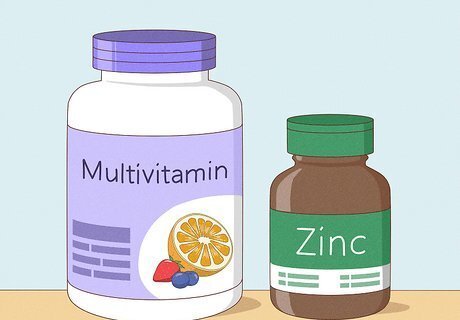
Take multivitamins and eat a healthy diet. Some piercing professionals have found that taking vitamins, such as Vitamin C, Zinc, or multivitamins, is beneficial in stimulating navel piercing healing. So, step out into the sun to get some Vitamin D and/or add a Zinc tablet or multivitamin to your morning routine while your piercing is healing. Along with your vitamins, make sure to drink plenty of water and eat well. After all, the healthier you are, the faster your piercing will heal.
Belly Button Piercing Complications & Care

Clean an irritated piercing with a saline solution regularly. If your piercing site is suddenly hurting or uncomfortable, chances are you have an irritated piercing. This can happen if you accidentally tug, snag, or sleep on your piercing. There might be slight swelling or redness around the site but no extreme pain or discharge. Fix this by wearing loose clothing, sleeping on your back, and cleaning the piercing site regularly. Consider purchasing a hard, vented eye patch to place over your piercing to protect it from clothing and bumps. Try applying a cold compress (consisting of cool water and a small cloth or towel) onto your piercing to help relieve discomfort. If you have any questions, call your piercer or visit them in person so they can look at your piercing.

Try home remedies to ease pain and discomfort. If your symptoms are initially mild, consider trying some home remedies to fix the problem before consulting a doctor. A few soothing home remedies include: Compresses: Warm and cold compresses can relieve discomfort in irritated piercings. A warm compress dipped and wrung out with a saline solution can clean the area while promoting blood flow. A cool compress (such as a sterilized ice pack) can soothe the hot feeling radiating from the piercing site. Chamomile tea soaks: Steep a bag of chamomile tea in a cup of boiling water. Wait for the tea to cool, and dip a cotton ball into the tea. Use the cotton ball to soak your irritated piercing for around 5 minutes. Repeat this at least once a day. Freezing the tea into ice cubes and placing them on the piercing is another option, especially if you experience piercing site swelling. Pain relief medications: If your piercing site is achy and painful, consider taking over-the-counter pain medication, like ibuprofen or acetaminophen.

Deal with an infected piercing by visiting your doctor. It’s normal to have some discomfort, bleeding, and bruising after getting your navel pierced, but you should also look out for signs of a possible infection. When a navel piercing gets infected, there’s typically severe swelling and redness around the piercing site. The piercing site may feel warm and have foul-smelling green, yellow, or gray discharge. If you experience any of these symptoms, contact your doctor immediately. It’s also common to have a fever when you have a piercing infection. Do not remove your piercing jewelry if you believe your piercing is infected. Removing your jewelry could irritate the infection and cause your piercing hole to close, preventing the piercing from properly draining.
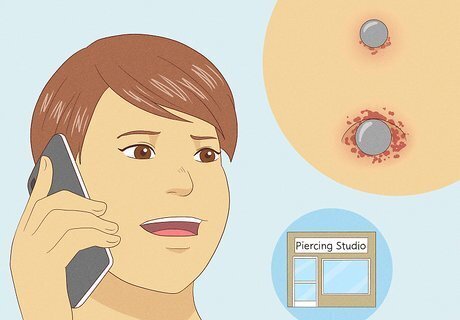
Get immediate attention if you suspect an allergic reaction. An allergic reaction might occur hours or days after the initial piercing. Normally, an allergic reaction is your body’s response to being allergic to the jewelry’s metal. Signs of an allergic reaction include itchiness around the piercing site, heat radiating from the piercing site, a widened piercing hole, or swelling and inflammation around the piercing. Contact your piercer and/or doctor right away if you experience any of these symptoms. Nickel is a common metal that causes an allergic reaction with piercings. With an allergic reaction, your skin might also loosen or tighten around the jewelry Antibiotics are typically used to treat piercing reactions, but the piercing may need to be removed in more serious cases.














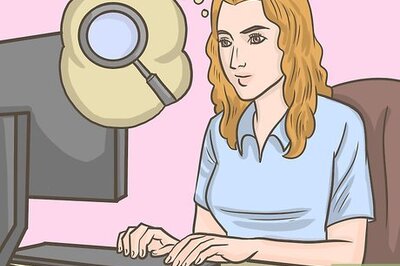


Comments
0 comment